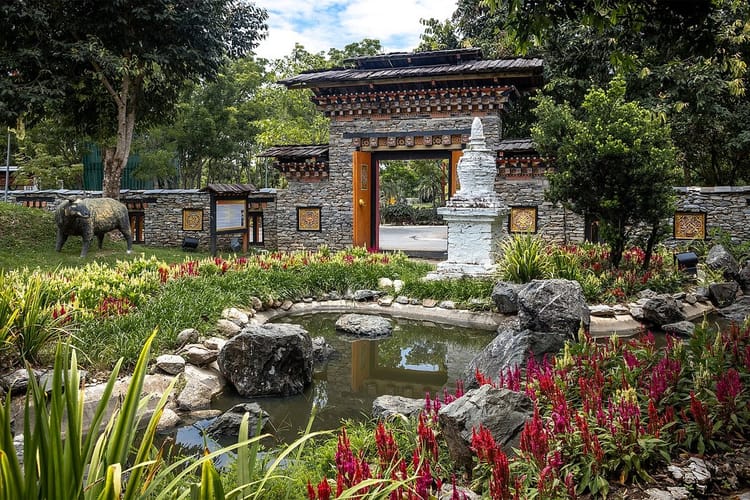Designing a Private Oasis: Creating a Garden for Privacy

In our fast-paced world, it's important to have moments of peace and tranquility in our private life. One way to achieve this is by designing a private garden that offers privacy. This space can serve as a sanctuary where you can unwind and recharge. Whether you need to block out noisy neighbors, or a busy street, or crave a secluded area, this post will help guide you through the process of creating a private oasis that seamlessly combines nature and seclusion.
Assess Your Needs and Goals
Prior to starting the design process, it is important to evaluate your privacy needs and goals for your garden. Take into account factors such as desired level of privacy, the size and layout of your outdoor space, and any specific elements you want to include, such as a seating area or water feature. This evaluation will provide you with a solid foundation for designing your garden and help you make informed decisions throughout the process.
Choose the Right Plants
If you want to create privacy in your garden, it's important to choose the right plants. You can use tall and dense hedges or trees as natural screens to keep your garden hidden. Evergreen trees and shrubs are great options because they provide year-round coverage. When picking plants for a privacy hedge, make sure to consider their height, density, growth rate, and whether they're suitable for your climate. Here are some popular plant options that make excellent choices for privacy hedges:
- Arborvitae (Thuja occidentalis): Arborvitae is a popular evergreen tree that forms a dense, tall hedge. It has a narrow shape, requires minimal pruning, and provides year-round privacy.
- Leyland cypress (x Cupressocyparis leylandii): Leyland cypress is a fast-growing evergreen tree that quickly forms a dense hedge. It has a conical shape and offers excellent privacy even in colder climates.
- Privet (Ligustrum spp.): Privet is a versatile shrub with various species suitable for hedges, such as Japanese privet (Ligustrum japonicum) and California privet (Ligustrum ovalifolium). They have dense foliage, grow quickly, and respond well to pruning.
- Fern Pine (Podocarpus spp.): Fern Pines are trees that can be pruned when young to grow as a hedge. These are also widely available as espaliered specimens for a thinner hedge, useful for smaller spaces.
- Holly (Ilex spp.): Several holly species, such as American holly (Ilex opaca) and Chinese holly (Ilex cornuta), can be used for privacy hedges. They have thick foliage, are evergreen, and some varieties produce attractive berries.
- Bamboo (Phyllostachys spp.): Certain bamboo species can create tall and dense privacy hedges. Try to choose to clump bamboo varieties to avoid invasive spreading, or you will need to install a root barrier. Popular options include Golden bamboo (Phyllostachys aurea) and Black bamboo (Phyllostachys nigra).
- Cherry Laurel (Prunus laurocerasus): Skip laurel is a broadleaf evergreen shrub that forms a dense, thick hedge. It has glossy leaves and tolerates shade well, making it suitable for various garden conditions.
Remember to consider factors such as the desired height and width of the hedge, maintenance requirements, and the specific growing conditions in your area when selecting the appropriate plants for your privacy hedge.
Another approach is incorporating climbing plants and vines that can grow on trellises, fences, or pergolas. These can add a vertical element to your garden while offering both privacy and beauty. Options like Clematis, Wisteria, and Honeysuckle are well-suited for this purpose.
Install Structures for Privacy
Structures such as fences, walls, and pergolas can play a significant role in enhancing privacy within your garden. When selecting materials, opt for those that align with your desired aesthetic and provide adequate coverage. Consider using materials like wood, bamboo, or lattice panels that offer a natural and visually appealing look.
Incorporating hardscaping elements can also contribute to privacy. Strategically placed stone walls, raised beds, or fences can create physical barriers and distract attention away from the surrounding areas. If your space feels less private due to external noise that cannot be blocked by a physical barrier, consider adding a water feature. Water Features with flowing water will create some white noise to help you tune out the world outside your private space.

Integrate Outdoor Screens
To add a touch of flexibility to your privacy design, consider integrating outdoor screens, shade sails, or curtains. These movable elements allow you to adjust the level of privacy according to your needs. Privacy screens can be made from various materials like wood, metal, or fabric, and they can be positioned strategically to shield specific areas.
Outdoor curtains, on the other hand, provide a soft and elegant touch to your garden while providing privacy when desired. They can be hung on pergolas, gazebos, or between trees to create secluded spaces within your garden.
Shade sails are a useful and inexpensive way to block views from above. Because they can be angled, they can be positioned to block the sun as well as views.

Enhance Privacy with Strategic Landscaping
Strategic landscaping techniques can further enhance privacy in your garden. Creating layers of vegetation using plants of varying heights and textures adds depth and block unwanted views. Use ornamental grasses, tall perennials, or hedges to create natural barriers and focal points.
Strategic placement of seating areas, gazebos, or pergolas can also help in creating intimate and private spaces within your garden. By positioning these features away from neighboring sightlines, you can enjoy a secluded area for relaxation or entertaining.
Designing a garden for privacy requires thoughtful planning and a blend of natural and structural elements. To achieve this, you should determine your requirements, choose suitable plants, add structures, and utilize effective landscaping techniques. By doing so, you can create a secluded area where you can relax and appreciate the natural surroundings.





